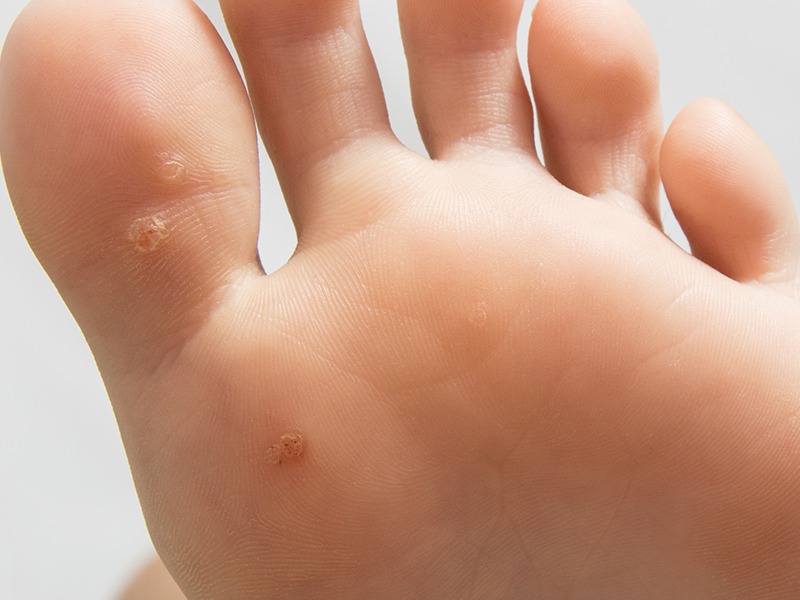Verrucas (Plantar Warts): Causes, Symptoms and Treatment Explained by a Podiatrist
What Are Verrucas (Plantar Warts)?
At Podiatry Beyond, we often see patients who are unsure whether the rough patch on the bottom of their foot is a corn, a callus, or something else.
In many cases, it turns out to be a verruca — also known as a plantar wart — a benign (non-cancerous) skin growth caused by the Human Papillomavirus (HPV).
Verrucas occur on the soles of the feet (the “plantar” surface) and are highly contagious, which means they can spread easily in certain environments.
How Do Verrucas Develop?
HPV enters the skin through tiny cuts or breaks, usually on the bottom of your feet.
The virus thrives in warm, moist environments such as:
Public swimming pools
Communal showers
Gym locker rooms
You can contract verrucas by:
Walking barefoot on contaminated surfaces
Having direct contact with someone who has the virus
Touching or scratching an existing wart and spreading it to another area of your foot
Types of Verrucae
1. Solitary Verrucas
A single, well-defined lesion (often 1–2 cm in diameter)
Rough, cauliflower-like texture with tiny black dots (small blood vessels) in the centre
Painful with pressure when walking or standing
May grow deeper into the skin if untreated
Commonly found on weight-bearing areas such as the heel or ball of the foot
2. Mosaic Verrucas
Clusters of smaller warts grouped together, resembling mosaic tiles
Usually flatter and more superficial
Often less painful, but can be more resistant to treatment
May spread across larger areas of the foot
Typically found on non-weight-bearing areas, though they can appear anywhere
Common Signs and Symptoms
If you’re unsure whether your lesion is a verruca, look for:
Pain or tenderness when walking or standing
Black pinpoint dots in the centre of the lesion
Thickened, rough skin or callus over a sore spot
Interrupted skin lines or footprint pattern
If these symptoms sound familiar, it’s time for a podiatry assessment to confirm the diagnosis.
How a Podiatrist Can Help
At Podiatry Beyond, our podiatrists can:
Accurately diagnose verrucas and differentiate them from corns, calluses or other skin conditions
Educate you on hygiene practices and prevention strategies
Create a personalised treatment plan tailored to your specific type of verruca, medical history and daily activity level
Treatment Options
Treatment will depend on the type, size and depth of your verruca, as well as your comfort level and overall health.
Common options include:
Chemical applications (topical treatments)
Cryotherapy (freezing)
Microwave therapy
Surgical removal (for persistent or deep lesions)
Our goal is always to safely and effectively treat verrucas, minimise pain, and reduce downtime from your day-to-day activities.
Tips to Prevent Verrucas
You can lower your risk of contracting or spreading HPV by:
Wearing thongs or water shoes in public showers, pools, or change rooms
Keeping your feet clean and dry, changing socks daily
Avoiding touching or scratching existing verrucas
Not sharing towels, socks or footwear with others
Covering verrucas with waterproof dressings when swimming
Checking your feet regularly for any new growths or changes
When to See a Podiatrist
If you suspect you have a verruca, or if it’s causing pain, spreading, or affecting your comfort when walking — don’t wait for it to go away on its own.
Verrucas can become more stubborn over time and harder to treat.
At Podiatry Beyond, we provide gentle and effective verruca management to help you get back on your feet — pain-free!
Call our friendly team on (07) 3709 7617
Book online under General Nail and Skin Care to start your verruca treatment today!


